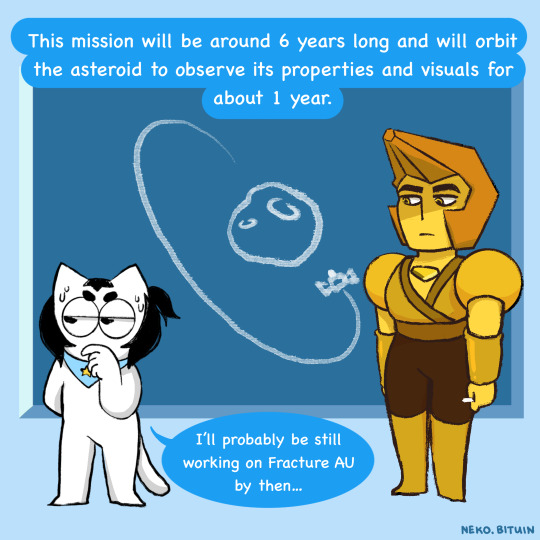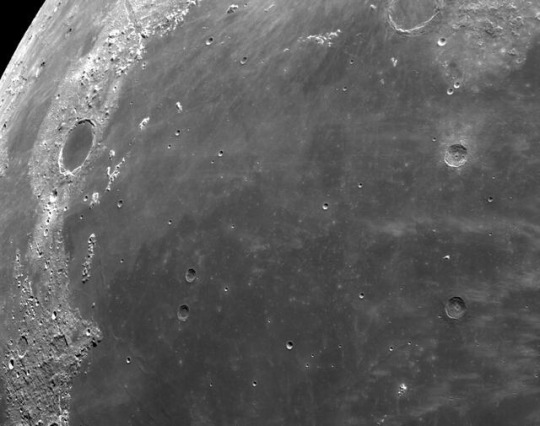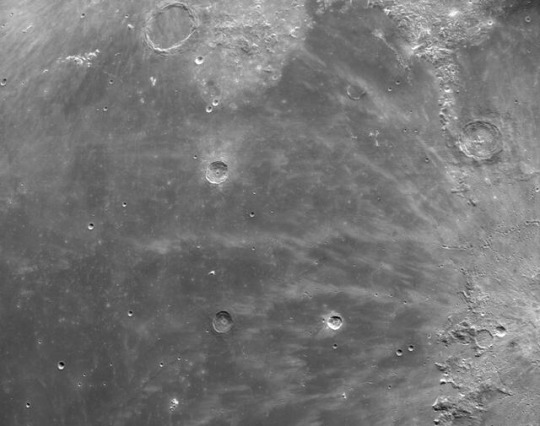#nasatv
Explore tagged Tumblr posts
Text
NASA's Frank Rubio Shatters Space Record Aboard ISS

Record-Breaking Earth-to-Space Call
In a historic Earth-to-Space call scheduled for 12:05 p.m. EDT on Wednesday, September 13, NASA Administrator Bill Nelson and Deputy Administrator Pam Melroy will engage in a conversation with agency astronaut Frank Rubio. The discussion centers around Rubio's remarkable mission aboard the International Space Station (ISS), marking a new record in American spaceflight history.
Tune In to Witness History
The call, providing a glimpse into life aboard the ISS and the incredible achievements of American astronauts, will be broadcast live on NASA TV, the NASA App, and the agency’s official website. Interested viewers can watch this groundbreaking conversation online at https://www.nasa.gov/live.
Rubio's Record-Setting Journey
Frank Rubio, currently on a year-long mission aboard the orbiting laboratory, has officially surpassed NASA astronaut Mark Vande Hei’s previous U.S. record of 355 days in space for the longest single spaceflight by an American. When Rubio returns to Earth later this month, he will have spent an astonishing 371 days in space. To explore more NASA station astronaut records, refer to the agency's official website.
Pioneering Continuous Space Living
For over 22 years, astronauts have continuously inhabited and operated on the space station, conducting critical experiments, advancing scientific knowledge, and honing skills essential for deep space exploration. Now, let's focus on Frank Rubio, a member of NASA's 2017 Astronaut Candidate Class, who began his mission in September 2022 and will conclude it in September 2023, achieving the longest single-duration spaceflight for a U.S. astronaut.
A Diverse Background in Service
Frank Rubio, a native of Florida, brings a diverse background to this historic mission. He graduated from the U.S. Military Academy in 1998 and earned a Doctorate of Medicine from the Uniformed Services University of the Health Sciences in 2010. Before attending medical school, Rubio served as a UH-60 Blackhawk helicopter pilot, accumulating more than 1,100 flight hours, including over 600 hours in combat and imminent danger zones during deployments to Bosnia, Afghanistan, and Iraq. Dr. Rubio is a board-certified family physician and flight surgeon. At the time of his selection as an astronaut, he was serving in the 10th Special Forces Group (Airborne) at Fort Carson, CO. This remarkable Earth-to-Space call marks another milestone in the history of space exploration, as NASA's astronauts continue to push the boundaries of human endurance and knowledge beyond the confines of our planet. Sources: THX News & NASA. Read the full article
#Americanastronaut#Earth-to-Spacecall#FrankRubio#InternationalSpaceStation#Longestspaceflight#NASAAdministratorBillNelson#NASAastronaut#NASATV#PamMelroy#Spacerecord
0 notes
Text

Hello everyone! Have a blessed day! Let's walk with appreciating the moments that make life special. Let's stay positive, and remember, we're in this beautiful journey together! Let's make today amazing! #iampeace #jeanetteandmikeinspace #picturecourtesy #nasatv #kmtv #www.nasa.gov/station
0 notes
Link
This artist’s concept shows Intuitive Machines’ Nova-C lander on the surface of the Moon. This robotic delivery, part of NASA’s CLPS (Commercial Lunar Payload Services) initiative and Artemis campaign, will transport agency science and technology demonstrations to the Moon for the benefit of all.Intuitive Machines NASA will host a media teleconference at 3:30 p.m. EST Wednesday, Jan. 31, to discuss its science and technology demonstrations flying aboard Intuitive Machines’ first flight to the Moon as part of the agency’s CLPS (Commercial Lunar Payload Services) initiative and Artemis campaign. Audio of the CLPS science call will livestream on the agency’s website at: https://www.nasa.gov/nasatv Briefing participants include: Joel Kearns, deputy associate administrator for exploration, Science Mission Directorate, NASA Headquarters Debra Needham, program scientist, Exploration Science Strategy and Integration Office, NASA Headquarters Chris Culbert, program manager, CLPS, NASA Johnson Space Center Trent Martin, vice president, Space Systems, Intuitive Machines To participate, media must RSVP no later than two hours before the briefing by emailing [email protected]. The Intuitive Machines Nova-C lander will launch on a SpaceX Falcon 9 rocket and carry NASA robotic science and other commercial payloads to the Moon. Liftoff of the SpaceX Falcon 9 rocket is targeted for a multi-day launch window, which opens no earlier than mid-February from Launch Complex 39A at NASA’s Kennedy Space Center in Florida. Among the items on its lander, this first Intuitive Machines mission will carry NASA science instruments focusing on plume-surface interactions, space weather and lunar surface interactions, radio astronomy, precision landing technologies, and a communication and navigation node for future autonomous navigation technologies. In May 2019, the agency awarded a task order for scientific payload delivery to Intuitive Machines. Through Artemis, commercial robotic deliveries will perform science experiments, test technologies, and demonstrate capabilities to help NASA explore the Moon in advance of Artemis Generation astronaut missions to the lunar surface, in preparation for future missions to Mars. NASA is working with several U.S. companies to deliver science and technology to the lunar surface through the CLPS initiative. This pool of companies may bid on task orders. A task order award includes payload integration and operations, as well as launching from Earth and landing on the surface of the Moon. NASA’s CLPS contracts are indefinite-delivery/indefinite-quantity contracts with a cumulative maximum contract value of $2.6 billion through 2028. For CLPS updates including launch follow: https://blogs.nasa.gov/artemis -end- Alise FisherHeadquarters, [email protected] Nilufar RamjiJohnson Space Center, [email protected] Antonia JaramilloKennedy Space Center, [email protected] Share Details Last Updated Jan 24, 2024 LocationNASA Headquarters Related TermsCommercial SpaceArtemisCommercial Lunar Payload Services (CLPS)Commercial Space ProgramsMissions
0 notes
Text
Watch NASA...
Stay informed about what is out there in outer space! Brought to us by NASA. https://www.nasa.gov/wp-content/uploads/2023/02/nasa-in-2023-a-look-ahead-orig.mp4 https://www.nasa.gov/wp-content/uploads/2023/02/nasa-in-2023-a-look-ahead-orig.mp4 Watch NASA Live @ https://www.nasa.gov/nasatv/ watch NASA shows on demand @…
View On WordPress
0 notes
Text
Start of Image descriptions:
Image 1: NASA's Psyche Mission. Presented by Heliodor and Neko
Image 2: Tomorrow at 10:19 am EST (or Saturday), NASA will be launching a spacecraft to explore 'a world of metal', an astroid named 16 Psyche, 2.2 billion miles away!
Image 3: "Psyche"? For clarification, Psyche is the name of the mission and the name of the asteroid (16 Psyche) the mission revolves around!
Image 4: This mission will be around 6 years long and will orbit the asteroid to observe its properties and visual for about 1 year.
Image 5: So is this what 16 Psyche looks like?
[The image is of a spherical objects metallic grey in colour with craters and bumps and projections]
Well, this image is a "well educated guess" based off of analysis and observations of the astroid from 2.2. billion miles away. The Mission will answer this question, and could be very similar or very different.
Image 6: So what? Why is this mission important? Why should the humans care?
Image 7: Well, other asteroids we're come across are often made up of ice or plain rock, so 16 Psyche is very unique since it's Metallic (made of or resembling metal).
Specific makeup of 16 Psyche is unknown
Image 8: The Mission to Psyche could help us understand how the cores of Earth and other planets formed.
The reason why this is important is because we haven't been able to study the cores of planets directly. Psyche might have been an old planet's core, so what better way to study something than to look at a real one!
[A drawing meant to represent earth with question marks around it and an arrow pointing to a message that says (We can't drill that far down and the temperatures are too hot)
Adjacent is a drawing meant to represent Psyche 16 and there are arrows pointing towards it and a message that says (Bingo) which is written in all caps.]
Image 9: The mission is exciting since it'll help us learn about "us" and our place in the universe!
There are so many 'firsts' with Psyche, so if you want to stay tuned with the launch check out NASA.gov/live :3
End of Image descriptions.
also live nasa link : https://www.nasa.gov/nasatv/









I’ve been given the opportunity to attend NASA’s Psyche Mission Launch and to document and share the experience with you all! I will be share more of my experience on my instagram story, but in the meantime here’s an informational about the mission taught by Heliodor and myself (Since the other rank 1’s haven’t made an entrance yet) :3
#i'm sure someone can and will do this much better than me bc i suck at descriptive image descriptions#but (and not to downplay op's great art) the factual info is the uh main thing here so i wanted to make tht avail at least for more ppl yah
290 notes
·
View notes
Photo

Behbeh
#splashdown#spacex#nasa#nasatv#elon musk#space the final frontier#astronaut#capsule#dragon endeavour#dailybehbeh#behbeh#american#american dream#cartoon#teddy bear#illustration
145 notes
·
View notes
Video
instagram
#spacex #bobanddoug #arriving #spacestation #nasatv #historyinthemaking #astronaut #space (at SpaceX) https://www.instagram.com/p/CA3HcCIAeZF/?igshid=zkavn4dl5u78
4 notes
·
View notes
Photo

NASA’s #NewHorizons spacecraft will perform a fly-by of UltimaThule in the #KuiperBelt on #NewYearsDay!! over 4 billion miles away from #Earth - Watch #NASATV on #NewYearsEve - https://www.nasa.gov/nasalive
#space#NewHorizons#asteroid#KuiperBelt#NASA#Pluto#2014 MU69#science#planetary science#nasatv#NewYearsEve
2 notes
·
View notes
Photo

Days in this game is slowly gone get better for the whole planet @avamax #GoddessAngelAva one. #NasaTV mix with some #RoswellNM future tech picture style. Birth Mother @akashicqueen Father god @kryonleecarroll and my space family.🙏🏽 26730 Woodmont St RosevilleMichigan #GoddessAngelAva Old soul right here. #HolographicMedicalPods #OrionStarSeed #AtlanteanStarSeed #ArcturianStarSeed #AndromedaStarSeed #PleiadianStarseed #LemurianStarSeed 💫SEED #Telos #DreamGirlsRock #AlienGirlsRock #AliensAreCool #UFOsRock #TheSecretUniverse #TheGalaticFederationOfLight #THESPIRITCARGOD #THESONOFGOD #KRYONSON🙌🏽 https://www.instagram.com/p/CbSqu-1Ly1M/?utm_medium=tumblr
#goddessangelava#nasatv#roswellnm#holographicmedicalpods#orionstarseed#atlanteanstarseed#arcturianstarseed#andromedastarseed#pleiadianstarseed#lemurianstarseed#telos#dreamgirlsrock#aliengirlsrock#aliensarecool#ufosrock#thesecretuniverse#thegalaticfederationoflight#thespiritcargod#thesonofgod#kryonson🙌🏽
0 notes
Photo

Die NASA gab 1 Million Dollar für die Entwicklung eines Kugelschreibers aus, der auch im Weltraum funktionieren sollte. Die Russen benutzten Bleistifte. 🖖 irgendwo im Internet #nasa #nasa🚀 #nasabilder #nasapic #nasapictures #nasapict #nasalive #nasalivestream #nasalivefeed #nasatv #nasanews #nasanew #sojuz #weltall #weltall #universe #univers #space #spacex #spaceship #spaceshipearth #spaceships #spaceshipearth #mariosolak #onlineverkaufen #onlinemarketingconsultant #onlinemarketingberatung #onlinemarketingberatung (hier: Neckarsulm, Germany) https://www.instagram.com/p/B-_q-KPnk1C/?igshid=1ixr9t98de337
#nasa#nasa🚀#nasabilder#nasapic#nasapictures#nasapict#nasalive#nasalivestream#nasalivefeed#nasatv#nasanews#nasanew#sojuz#weltall#universe#univers#space#spacex#spaceship#spaceshipearth#spaceships#mariosolak#onlineverkaufen#onlinemarketingconsultant#onlinemarketingberatung
0 notes
Photo

Nasa posts a photo of Sun whose active spots make it look like a Jack-o-lantern! The image was captured by NASA's Solar Dynamics Observatory, or SDO, which watches the sun at all times from its orbit in space. . #jackolanternsun #nasatv #halloween #spooky #science #sun #solardynamicsobservatory https://www.instagram.com/p/B4LSHEtAnVG/?igshid=izyl0knl3v78
0 notes
Text

Hello everyone! Have a blessed day! It is a new day, a new week, and the last day of winter! Let's walk rejuvenated and with new ambitions! ##iampeace ##bepositive #laurelinspace #picturecourtesy #nasatv #kmtv #www.nasa.gov/station
0 notes
Link
Teams with Astrobotic install the NASA meatball decal on Astrobotic’s Peregrine lunar lander on Tuesday, Nov. 14, 2023, at the Astrotech Space Operations Facility near the agency’s Kennedy Space Center in Florida.NASA/Isaac Watson NASA will host a What’s on Board media teleconference at 2 p.m. EST Wednesday, Nov. 29, to discuss the science payloads flying aboard the first commercial robotic flight to the lunar surface as part of the agency’s CLPS (Commercial Lunar Payload Services) initiative under the Artemis program. Carrying NASA and commercial payloads to the Moon, Astrobotic Technologies will launch its Peregrine lander on ULA’s (United Launch Alliance) Vulcan rocket. Liftoff of the ULA Vulcan rocket is targeted no earlier than Sunday, Dec. 24, from Launch Complex 41 at Cape Canaveral Space Force Station in Florida. The Peregrine lunar lander will touch down on the Moon in early 2024. Audio of the call will stream on the agency’s website at: https://www.nasa.gov/nasatv Briefing participants include: Joel Kearns, deputy associate administrator for Exploration, Science Mission Directorate, NASA Headquarters in Washington Ryan Watkins, program scientist, Exploration Science Strategy and Integration Office, NASA Headquarters Chris Culbert, program manager, CLPS, NASA’s Johnson Space Center in Houston John Thornton, CEO, Astrobotic, Pittsburgh To participate by telephone, media must RSVP no later than two hours before the briefing to: [email protected]. NASA awarded a task order for the delivery of scientific payloads to Astrobotic in May 2019. Among the items on its lander, the Peregrine Mission One will carry NASA payloads investigating the lunar exosphere, thermal properties of the lunar regolith, hydrogen abundances in the soil at the landing site, and magnetic fields, as well as radiation environment monitoring. Through Artemis, NASA is working with multiple CLPS vendors to establish a regular cadence of payload deliveries to the Moon to perform experiments, test technologies, and demonstrate capabilities to help NASA explore the lunar surface. This pool of companies may bid on task orders to deliver NASA payloads to the Moon. Task orders include payload integration and operations, launching from Earth, and landing on the surface of the Moon. The indefinite delivery, indefinite quantity CLPS contracts have a cumulative maximum value of $2.6 billion through 2028. With CLPS, as well as with human exploration near the lunar South Pole, NASA will establish a long-term cadence of Moon missions in preparation for sending the first astronauts to Mars. For more Artemis updates, follow along at: https://blogs.nasa.gov/artemis/ -end- Karen Fox / Alise FisherHeadquarters, Washington202-358-1600 / [email protected] / [email protected] Nilufar RamjiJohnson Space Center, [email protected] Antonia JaramilloKennedy Space Center, [email protected] Share Details Last Updated Nov 20, 2023 Location NASA Headquarters Related Terms ArtemisCommercial Lunar Payload Services (CLPS)Commercial SpaceHumans in Space
0 notes
Video
instagram
Dragon Capture confirmed! Well done to all at NASA, SpaceX and to the CAPCOM. #nasa #nasatv #space #spacex #spacexdragon #dragoncapsule #iss #internationalspacestation #capcom
1 note
·
View note
Text
https://www.nasa.gov/multimedia/nasatv/#public
The Orion Spacecraft is currently entering the Earth's atmosphere after a trip around the moon. It should be touching down in about 15 minutes
2 notes
·
View notes
Text




The moon's surface as seen by Orion, which is set to return to Earth and conclude the Artemis I mission on December 11 at 12:40 PM Eastern time.
Watch the splashdown live on NASA TV: https://www.nasa.gov/multimedia/nasatv/#public
3 notes
·
View notes